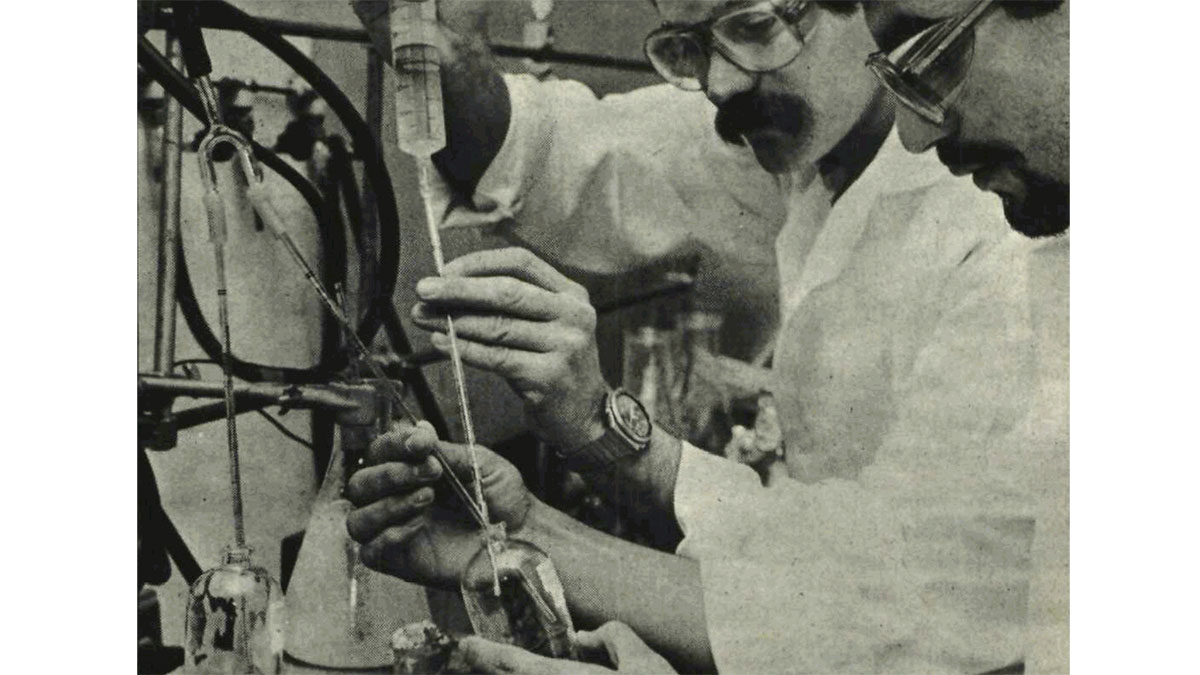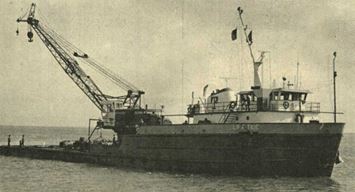This Day in History
This Day in History (1985): Scientists, Engineers Are Allies In Aramco's 'Battle of the Bugs'

Global July 03, 2023
Battling corrosion among Aramco's No. 1 jobs on pipelines carrying water to injection sites.
From the July 3, 1985, edition of The Arabian Sun
As every Aramcon knows, Saudi Arabia's oil flows to the surface under its own subterranean pressure. But this pressure decreases over the years as oil is produced, and for some decades, the company has been using water injection in some field to keep the oil flowing at desired rates.
Water injection simply means pumping water -- largely seawater from the Gulf -- into the ground around the edges of the oil reservoir. But in practice, the job is not as simple as it sounds -- and one of the main problems that has to be overcome is getting the right quality of water to the wellhead.
That means not only questions of salinity, oxygen content, and other parameters; it means dealing with life in the pipes, and the intricacies of bacteria living in the water-injection system.
Bacterial activity can cause corrosion of the water pipes and other equipment, and this process, damaging in itself, also produces slides that block water injection wells.
Furthermore, the bacteria living in the water produce sulfides. Sulfides sour the crude oil, and sour crude needs extra refining.
Worldwide the specialty of oilfield microbiology has recently grown up to study and solve these problems, and much original work has been done in the Laboratories Department as well as in the field in Saudi Arabia.
Local efforts to tackle the bacterial problem have already met with success, thanks to what one participant called "a unique cooperative working relationship," and studies are continuing.
The pipes that make up Aramco's entire seawater injections system have a surface area of approximately 14 million square feet — more than 18 times the floor area of the EXPEC and Engineering Buildings combined.
Inhabiting this enormous space and the water it contains are two populations of sulfide-producing bacteria. One is planktonic, the other is what biologists call sessile.
It is the sessile population that is of greatest concern, not only because it is these bacteria that corrode the pipes, but also because they are much harder to kill with waterborne chemical agents that are routinely injected into the system to kill the bacteria.
Consequently, the battle against the bugs includes, in addition to bactericides, regular physical scraping of the pipes. This is done with large machines that look like giant flue brushes, pushed through the pipes by water pressure.
For a five-foot diameter pipe, the scrape is nearly the size of a Volkswagen "Bug."
Numerous trials and studies have been conducted by Aramco microbiologists and operations personnel to determine which bactericides are the most effective, and also what is the best combination of bactericide injection and scraping.
The efforts of Aramco's corrosion engineers the microbiologists of the Laboratories Department have been rewarded by lower bacteria and particle counts in the water arriving at the wellheads than have been reported before.
Caption for top photo: Laboratories Department scientist Rick Rosser and technician Tawfiq al-Ibrahim conduct a test to determine the stability of bacteria-inhibiting chemicals under conditions identical to those of Aramco's water injections system.
Also on this date
1996 — British Prime Minster John Major announced the Stone of Scone would be returned to Scotland
1989 — Jim Backus, the voice of Mr. Magoo and one of the cast members on "Gilligan's Island," dies of pneumonia in Los Angeles at age 76
1973 — David Bowie retires his stage persona Ziggy Stardust with the surprise announcement that it is "the last show that we'll ever do"
1962 — Actor Tom Cruise (real name Thomas Cruise Mapother IV) is born in Syracuse, New York
1952 — The Constitution of Puerto Rico is approved by the U.S. Congress
1938 — The world speed record for a steam locomotive is set in England by the "Mallard," which reaches a speed of nearly 126 miles per hour
1886 — The New York Tribune becomes the first newspaper to use a linotype machine, eliminating typesetting by hand
1819 — The Bank for Savings in the city of New York, the first savings bank in the U.S., opens
1767 — Norway's oldest newspaper still in print, Adresseavisen, is founded and the first edition is published
1608 — Quebec City is founded by Samuel de Champlain
1035 — William the conqueror becomes the Duke of Normandy
324 — Constantine I defeats Licinius in the Battle of Adrianople






